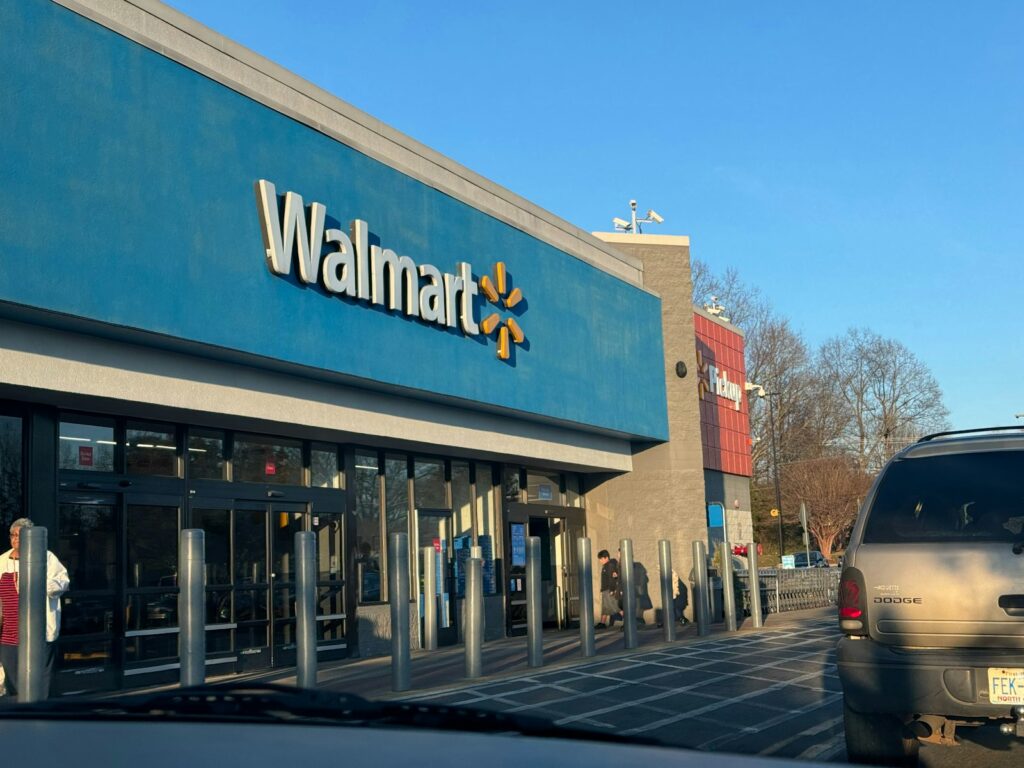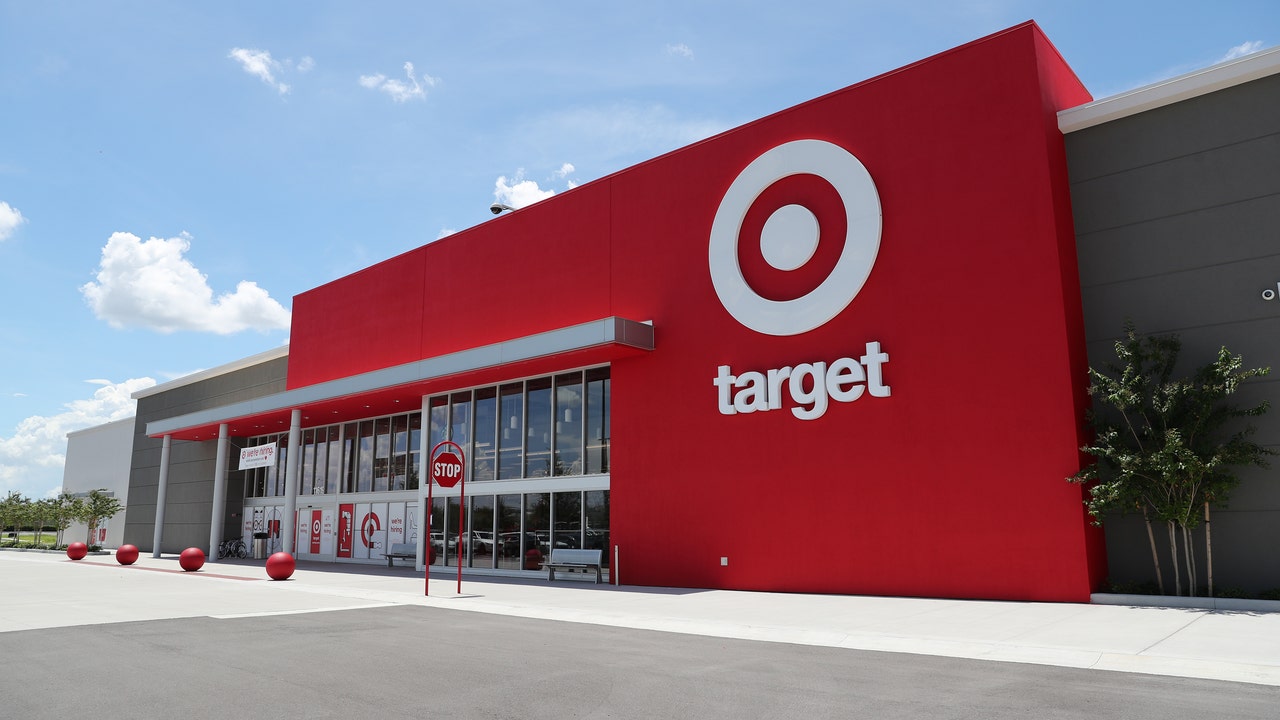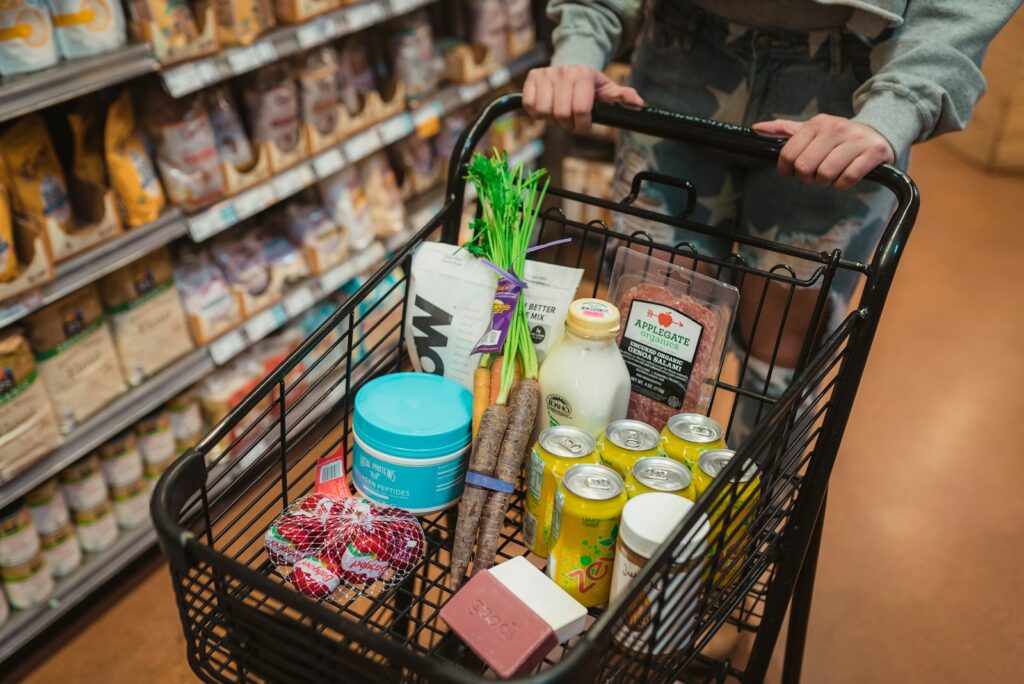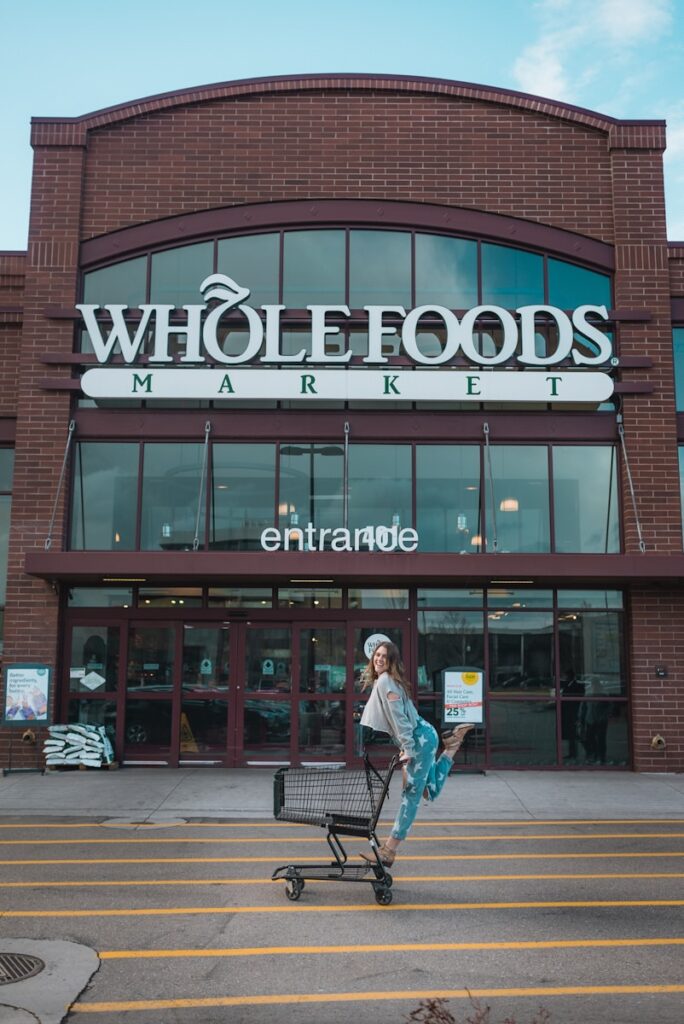
The retail landscape, a dynamic arena constantly shaped by consumer behavior, technological advancements, and economic pressures, is currently undergoing a significant transformation in one of its most fundamental aspects: the return policy. For years, the convenience of generous return policies has been a cornerstone of customer service, particularly for giants like Target and Walmart. However, a confluence of factors, ranging from escalating fraud to mounting operational costs, has compelled these major retailers to re-evaluate and, in many cases, tighten their longstanding practices.
This strategic pivot is not merely an isolated adjustment but a reflection of a broader industry trend. Retailers are grappling with inventory losses and the complex economics of a system that, while designed to foster customer loyalty, has also become susceptible to widespread abuse. The modifications being implemented by these market leaders signal a more structured and verifiable approach to returns, aiming to safeguard profitability without entirely alienating the legitimate customer base.
This article delves into the core reasons driving these monumental shifts, offering an analytical perspective on the challenges retailers face and the strategic responses they are deploying. From explicit denials of fraudulent returns to the silent phasing out of outdated payment methods, and even the counterintuitive adoption of ‘keep it’ policies, we will explore the multifaceted considerations shaping the future of retail returns.

1. **Target’s Explicit Right to Deny Returns Due to Fraud and Abuse**Target, a retailer long celebrated for its customer-friendly policies, has recently implemented a decisive shift in its return guidelines. This change explicitly grants the company the right to deny returns, refunds, and exchanges. The updated policy, as stated on its website, includes but is not limited to, situations involving “prevent, suspected fraud or abuse.” This represents a significant hardening of its stance.
This decision comes after years of persistent reports detailing instances where customers returned heavily used or even shoplifted items. Such practices placed a substantial burden on the retailer, leading to inventory losses and operational inefficiencies. While the company still aims to honor “most unopened items sold by Target in new condition and returned within 90 days,” the interpretation of “most” now rests squarely with the retailer’s discretion.
Crucially, Target has also affirmed that its staff will be on higher alert for potential fraudulent activity. This increased vigilance underscores the seriousness with which the company is addressing return abuse. The intent is clear: to mitigate financial losses and reinforce the integrity of its sales processes, ensuring that the generosity of its policies is not exploited.
The public reaction to Target’s revised policy has been notably mixed. While some consumers have expressed understanding, acknowledging that “Well that’s what happens when u abuse the system,” others have voiced concerns. Comments such as “They’re going to lose customers over this” highlight the delicate balance retailers must strike between loss prevention and maintaining customer satisfaction.

2. **Walmart’s Return to Pre-Pandemic Standards and Stricter Verification**Mirroring Target’s proactive measures, Walmart has also adjusted its return policy, effectively reverting to its pre-pandemic standards. This move signifies a concerted effort by another major retailer to address ongoing challenges, particularly concerning inventory losses and fraud, despite reporting strong holiday performance. The adjustments reflect a broader industry trend toward more structured return processes.
Under Walmart’s current guidelines, customers are permitted a four-month window to return unused and undamaged items. A critical component of this policy is the requirement for a verified purchase history, which enhances accountability and reduces the potential for fraudulent returns. This emphasis on verification is a direct response to the increasing sophistication of return abuse tactics observed across the retail sector.
Furthermore, Walmart’s policy provides some flexibility for customers who may not have immediate access to a complete purchase history. In such instances, providing a government-issued photo identification can assist in the return process. This pragmatic approach aims to accommodate legitimate customer needs while still upholding stricter security protocols designed to prevent losses.
These policy adjustments at Walmart align with the retailer’s strategic objective to improve the overall retail landscape. Despite robust sales and increased guidance for fiscal 2025 following a successful holiday season, the persistent challenge of inventory shrink – losses from theft and non-purchase related disappearance of goods – necessitates these protective measures. The updated policy is an integral part of Walmart’s comprehensive loss prevention strategy.

3. **The Alarming Scale of Return Abuse: A $101 Billion Industry Loss**The modifications to return policies by retail giants like Target and Walmart are not arbitrary; they are a direct response to a staggering financial drain on the industry. The National Retail Federation (NRF) has starkly highlighted the magnitude of this problem, reporting that retailers collectively lost approximately $101 billion last year due to return abuse. This figure underscores the urgent need for systemic changes.
Return abuse encompasses a range of deceptive practices, from customers returning heavily used merchandise to instances of shoplifted items being presented for a refund. Such activities not only result in direct financial losses but also contribute to operational inefficiencies. The processing of these illicit returns consumes valuable resources, including staff time, logistics, and inventory management efforts, further eroding profit margins.
The financial impact of this abuse is so profound that it compels retailers to take decisive action. The $101 billion loss is not merely an abstract statistic; it represents tangible revenue that could otherwise be invested in improving customer experience, employee wages, or store infrastructure. Therefore, these stricter policies are an economic imperative, designed to staunch the flow of losses that have become unsustainable.
Beyond the immediate financial implications, the prevalence of return abuse also impacts customer trust and the overall integrity of the retail ecosystem. When a system is exploited, it ultimately undermines the ability of retailers to offer flexible and generous policies to their honest customers. The new policies, while potentially perceived as less lenient, are fundamentally about protecting the business and, in the long run, ensuring fair practices for all.

4. **Phasing Out Personal Checks as a Modern Payment Streamlining Effort**In a parallel move to its stricter return policy, Target also ceased accepting personal checks as a form of payment on July 15. This decision, though seemingly distinct from return policies, is another strategic effort to modernize payment processes and enhance overall operational efficiency within the retail sector. It aligns with a broader trend observed across many big box retailers.
The rationale behind this change is rooted in the declining popularity of personal checks, particularly among younger consumers. This demographic increasingly favors electronic payment methods such as credit cards, debit cards, and digital wallets, rendering checks an increasingly obsolete form of transaction. While some older customers may still prefer checks, their overall usage has significantly decreased.
Retail experts have consistently noted the obsolescence of checks in the contemporary financial landscape. Their processing can be more cumbersome and prone to fraud compared to digital alternatives, incurring additional costs and administrative overhead for retailers. By eliminating checks, Target streamlines its payment systems, reduces potential security risks, and simplifies transaction reconciliation.
Target is not alone in this modernization effort. Other prominent retailers, including Aldi and Whole Foods, have already phased out the use of personal checks entirely. This collective movement underscores an industry-wide recognition that traditional payment methods must evolve to meet current consumer preferences and operational demands. It is a step toward creating a more efficient and secure transactional environment.
5. **The Strategic Adoption of “Keep It” Policies for Low-Value Returns**In a fascinating and somewhat counterintuitive development, some major retailers, including Walmart and Target, have begun adopting “keep it” return policies. This innovative approach allows customers to receive a refund for certain items without the requirement of physically returning the merchandise. It represents a significant departure from traditional return models and highlights a deep analysis of operational economics.
This policy shift is primarily driven by the high cost of dealing with returned goods, especially clothing items or relatively cheap products. Retailers have found that the logistical and financial burden of processing these returns often outweighs the value of the item itself. Unwanted items that are shipped back or brought in-person incur costs for sorting, transportation, warehousing, and then typically need to be resold at a discount or, in some cases, disposed of.
The economics are stark: a typical return reportedly costs a retailer $30 to process. When an item’s original retail price or its depreciated resale value is less than or comparable to this processing fee, it becomes more financially prudent for the retailer to simply issue a refund and allow the customer to keep the item. This minimizes reverse logistics costs and clears valuable warehouse space.
While the precise implementation details of these “keep it” policies may vary and remain somewhat unclear to shoppers, the underlying strategy is clear. It’s a calculated decision to optimize operational efficiency and reduce losses by eliminating the most unprofitable aspects of the return process. For consumers, this can unexpectedly transform an unwanted gift into a convenient, no-hassle refund experience.

6. **The Significant Operational Burden and Cost of Processing Each Return**Beyond the headline figures of return abuse, the sheer operational cost associated with processing legitimate returns represents a substantial burden for retailers. The seemingly simple act of returning an item initiates a complex and expensive logistical chain that can significantly erode profit margins. This hidden cost is a major driver behind the industry’s re-evaluation of return policies.
Returning a package involves numerous tedious tasks, from the consumer’s perspective, like repacking and relabeling, to visiting a local carrier. However, for the retailer, the process is far more intricate and costly. Unwanted items must be received, inspected, sorted, transported back to warehouses, and then assessed for resale. Often, these items must be discounted, or in worse cases, they become unsellable, representing a total loss.
The context explicitly states that “a typical return reportedly costs a retailer $30 to process.” This figure encompasses a multitude of expenses, including labor for handling, shipping fees, administrative overhead, and the potential depreciation of the item’s value. When factoring in the volume of returns, particularly with the predominance of online shopping, these individual costs quickly accumulate into billions of dollars annually.
Retail analysts, such as Neil Saunders, managing director at GlobalData Retail, emphasize this pressure. He notes, “both things come with a cost attached and retailers are effectively subsidizing expensive customer behaviors. With retail margins and profits under pressure, more retailers are looking at how they can reduce the cost of online fulfillment and returns.” This highlights the unsustainable nature of absorbing these full costs, especially for categories with thin margins.
Read more about: In the Boardroom: Decoding 15 Critical Control Mechanisms for Auto Executives in Joint Ventures and Venture Deals
7. **Addressing Evolving Consumer Expectations and Inconvenience in Online Returns**The rise of e-commerce has fundamentally reshaped consumer expectations, not just about purchasing convenience but also about the ease of returns. While a seamless return process can enhance customer loyalty, any perceived inconvenience can be a significant deterrent to online purchases. This evolving dynamic places additional pressure on retailers to refine their policies.
According to a recent survey by Pollen Returns, over 43% of respondents noted that it is inconvenient to complete an online purchase if the return involves printing a label, packing the item, taking it to a logistic service provider, or waiting for a refund. This underscores a critical pain point for modern shoppers, who are increasingly accustomed to effortless transactions from start to finish. The effort required for returns can outweigh the initial convenience of online shopping.
Indeed, the survey further revealed that 88% of the 1,092 people surveyed, all of whom shop online, wished the return process from an online purchase was easier. This strong sentiment indicates a widespread desire for simplified and less time-consuming return options. Retailers who fail to address this convenience gap risk losing customers to competitors offering more streamlined processes.
The impact of a challenging return experience is tangible; data from Happy Returns shows that 50% of shoppers have abandoned a purchase because the merchant did not offer a convenient return method. This highlights that return policies are no longer just a post-purchase formality but a critical factor influencing pre-purchase decisions. Retailers are therefore navigating a complex environment where they must balance cost reduction with the imperative of meeting heightened consumer demands for frictionless experiences.
While the previous section outlined the immediate pressures driving stricter return policies at Target and Walmart, these adjustments also reflect broader economic and logistical shifts. The retail industry faces escalating costs in post-purchase processes, compelling a re-evaluation of long-standing customer service principles against the necessity of financial sustainability.
This analysis delves into these macroeconomic and logistical forces, where retailers innovate to protect their bottom line. From rising shipping expenses to tighter return deadlines and the introduction of return fees, each policy modification is a strategic calculation. Companies are also exploring new conveniences, like flexible in-store returns and store credit incentives, integrating them into a holistic loss prevention strategy. The ultimate aim is to balance customer loyalty with profitability in a highly competitive market.
Read more about: Unmasking the Trust Deficit: Why Car Dealerships Are Struggling to Connect with Today’s Buyers and How They Can Rebuild Confidence

8. **The Escalating Costs of Shipping and Reverse Logistics**The economics of retail, particularly e-commerce, are profoundly impacted by surging shipping costs, a key factor driving changes in return policies. This escalating expense makes entirely free return models increasingly unsustainable. The logistical complexity and financial burden of moving goods both to and from customers pose a significant challenge for many retailers.
Experts attribute rising shipping costs to “increased cost in fuel, increase cost of labor [and] the complexity in logistics.” Marcus Shen, CEO of B-Stock Solutions, notes that “the last two years, since the pandemic, it accelerated the cost of moving something from point A to point B.” This macroeconomic reality directly erodes profit margins, especially for lower-priced or thin-margin items.
For “thin margins like grocery,” free shipping can result in online selling losses, as observed by Neil Saunders, GlobalData Retail managing director. Retailers are thus seeking efficiencies. Amazon, for instance, incentivizes customers to consolidate returns or pick up packages at designated locations like Amazon Fresh stores, offering coupons. This strategy not only reduces logistics expenses but also drives store traffic.
The challenge of reverse logistics—receiving, inspecting, sorting, and transporting returned goods—is equally formidable. This entire process incurs significant costs, including labor, restocking fees, and potential item depreciation. These operational realities demonstrate why retailers can no longer simply absorb the full cost of returns without strategic adjustments.
Read more about: Navigating the Crossroads: Key Legal and Policy Shifts Redefining the Trucking Industry in 2025

9. **The Trend Towards Shorter Return Windows**A significant policy shift gaining traction is the reduction of return windows, a direct response to economic conditions and excess inventory, especially from 2022. Retailers are strategically shortening return periods to expedite turnover and minimize losses on seasonal or depreciating goods.
As the context notes, “retailers are experiencing an increase in purchase returns due to an excess of inventory from 2022.” Natalie Kotlyar, BDO USA national managing partner, clarifies: “Retailers don’t want to take aged inventory and take back, for example, a coat in March.” This underscores the financial risk of holding outdated merchandise, which rapidly loses value and occupies warehouse space.
Consequently, many retailers have adjusted policies, “shortening the period of returns from 60 days to 30 days, with some drastically cutting them to 14 days.” This swift reduction is a critical inventory management strategy. Quicker return decisions enable retailers to more efficiently re-stock, re-price, or liquidate inventory, transforming goods into cash, crucial given “inflation and interest rates they are dealing with.”
Though potentially less convenient for consumers, shorter return periods are an economic necessity. They mitigate the financial impact of unsold or returned items, allowing retailers to respond agilely to market demands and maintain healthier balance sheets. This strategic tightening of deadlines is a proactive effort to convert inventory into liquidity, safeguarding business financial stability.
Read more about: The Billion-Dollar Secret: Uncovering How Movie Theaters Make a Fortune Beyond Ticket Sales

10. **The Implementation of Return Fees**To mitigate substantial costs, a growing number of online retailers are now implementing direct fees for processing returns. This policy is a pragmatic financial decision designed to recover a portion of the significant expenses incurred in reverse logistics, shifting some burden to consumers for non-faulty returns.
Christian Piller, co-founder of Pollen Returns, highlights the issue’s scale: “20% of all online purchases are returned,” and as e-commerce value increases, “the number of returns is increasing.” He emphasizes that “the current way of doing things is extremely expensive, which is why some retailers are getting into charging for returns.” The sheer volume and inherent processing costs make free returns financially unsustainable.
Data from Happy Returns shows “26% of merchants started charging for returns in the last year, while 16% were considering charging for returns in 2023.” Amazon, for example, imposes a “$1 fee for returning a package at a UPS location instead of dropping it off at a Whole Foods or Amazon Fresh store.” This strategic fee encourages customers toward less costly return methods for the retailer.
Piller explains, “just returning the product itself probably costs the retailer $12,” not including “the cost of processing, restocking and the loss of selling something at a discount price through liquidation.” Offering free returns when the minimum cost is significantly higher becomes “a challenging value proposition for these retailers.” Return fees are a direct response to these economic pressures, offsetting financial drain while encouraging thoughtful purchasing.
Read more about: Why Your Road Tax Is Set to Double: An In-Depth Look at America’s Infrastructure Funding Crisis
11. **Leveraging In-Store and Third-Party Drop-off Options for Returns**In a strategic move addressing both consumer convenience and operational efficiency, retailers increasingly promote in-store and third-party drop-off locations for returns. This approach offers symbiotic benefits: a more frictionless return experience for customers, often eliminating label printing or shipping arrangements, while allowing retailers to reduce expensive mail-in shipping costs and drive store traffic.
Natalie Kotlyar observes that “returns can be free if returned into the store and brands that have those locations can convert those losses into another purchase.” This highlights a significant advantage for brick-and-mortar retailers like Walmart and Target. Encouraging an additional purchase during an in-store return transforms a potential loss into a new sales opportunity, enhancing the retailer’s value proposition.
The strategy extends beyond proprietary store networks. E-commerce giants partner to facilitate convenient in-person returns, even for online purchases. “Amazon customers can easily return their packages at any Kohl’s location and they will pack, label and ship your return for free, while Ulta Beauty stores will accept returns from Revolve.” This collaborative model significantly broadens accessible return points, mitigating “tedious tasks” for shoppers.
Furthermore, retailers innovate within existing infrastructure. Target now offers “curbside return service at nearly 2,000 stores nationwide that allows customers to stay in their cars,” further streamlining the process. Zappos also leverages its Amazon relationship, allowing free returns at Whole Foods. These flexible, in-person options are crucial for balancing cost reduction with meeting modern consumer demands for effortless transactions.

12. **Incentivizing Store Credit for Returns**Beyond simple refunds, many retailers now incentivize customers to accept store credit rather than a direct refund. This strategy offers dual benefits: retaining capital within the ecosystem and often leading to future purchases, thereby converting a potential loss into a sustained revenue stream.
As Natalie Kotlyar notes, “From a retail perspective, they already have the cash; usually that credit goes unused and is free money for the retailer [anyways].” This highlights the financial advantage of store credit. Retailers avoid immediate cash outflow and gain a high probability that customers will return to spend that credit, potentially on a higher-value or additional item, strengthening brand loyalty.
While convenient options like “free-shipping label and a drop-off location through a third-party conglomerate” facilitate returns, store credit often accompanies these, acting as a sweetener. This makes the return process feel less like a cancellation and more like an opportunity for a different, more suitable item. By subtly guiding consumer behavior, retailers dynamically manage inventory and preserve profit margins, adapting to modern commerce’s economic realities.
Read more about: Starbucks’ Nationwide Reusable Cup Initiative: A Transformative Step Towards a Greener Coffee Future

13. **A Holistic Approach to Loss Prevention Across the Retail Journey**The evolving return policies are part of a broader, comprehensive strategy by major retailers to combat losses and secure profitability across all operations. These adjustments integrate into a holistic loss prevention framework, extending beyond point of sale to encompass every stage of the shopping experience.
The context explicitly states, “policy updates indicate that major retailers are taking a more comprehensive approach to loss prevention, extending beyond point-of-sale security to encompass the entire shopping experience, including the return process.” This signifies a recognition that vulnerabilities exist throughout the retail journey, necessitating a multi-faceted defense, where loss prevention guides pervasive operational decisions.
Examples of this broader approach include “enhanced entry point security, reduced self-checkout availability, and increased merchandise lockup practices.” These measures, alongside stricter return policies, reflect a concerted effort to deter various forms of shrink—theft, fraud, and operational inefficiencies. The goal is a more secure retail environment, protecting inventory and ensuring legitimate sales translate into profits.
Read more about: Zendaya’s Evolution: Tracing a Path from Rising Star to Producing Force, Highlighted by Her 2025 ‘Be My Baby’ Role

14. **Balancing Customer Satisfaction with Profitability: The Retailer’s Dilemma**At the heart of every policy adjustment lies a fundamental challenge for retailers: balancing customer satisfaction with profitability. In a competitive market, where consumer expectations for convenience clash with escalating costs and abuse, this equilibrium is more vital and precarious than ever.
The context frequently highlights this dilemma, noting that “the retail sector’s approach to managing returns comes at a time when companies are balancing customer satisfaction with loss prevention.” While generous policies traditionally fostered loyalty, financial drain from abuse and logistics forces difficult decisions. Alienating loyal customers is a risk, but unchecked losses threaten business existence.
Retail analyst Neil Saunders states, “both things come with a cost attached and retailers are effectively subsidizing expensive customer behaviors.” He adds, “With retail margins and profits under pressure, more retailers are looking at how they can reduce the cost of online fulfillment and returns. This has to be done sensitively, however, as consumers have become used to getting these things for free.” The required sensitivity underscores the fine line retailers must walk.
Ultimately, changes at Walmart, Target, and other retailers reflect efforts to strike this delicate balance. By implementing targeted restrictions, streamlining processes, and offering alternative incentives, they aim to preserve trust with legitimate customers while mitigating significant financial burdens from return abuse and rising operational costs. The future of retail returns will continue to evolve as companies innovate for sustainable growth without sacrificing fundamental customer service tenets.
The transformations in return policies, spearheaded by industry stalwarts like Walmart and Target, are not merely minor operational tweaks; they represent a fundamental recalibration of the retail ecosystem. This intricate dance between upholding customer convenience and fortifying financial resilience will continue to define the strategies of tomorrow’s market leaders. As consumers adapt to these new realities, and retailers refine their approaches, the underlying principle remains clear: an efficient, equitable, and sustainable return process is paramount for the enduring health of the retail landscape.






